| کد مقاله | کد نشریه | سال انتشار | مقاله انگلیسی | نسخه تمام متن |
|---|---|---|---|---|
| 2011047 | 1066995 | 2011 | 7 صفحه PDF | دانلود رایگان |

Caffeine (1,3,7-trimethylxanthine) is the most commonly ingested stimulant in the world. The daily consumption of this methylxanthine in coffee, tea and soft drinks is approximately 200 mg per person, which yields a pharmacologically active blood concentration. Experimental data indicate that caffeine may either lower the convulsive threshold in experimental models of epilepsy or induce seizure activity in doses over 400 mg/kg in rodents. Interestingly, animal data have demonstrated that caffeine, at doses far below its convulsive potential, diminishes the protective effects of conventional antiepileptic drugs (AEDs–carbamazepine, phenobarbital, phenytoin, valproate) and the newer AED, topiramate against electroconvulsions in mice. However, in contrast to these AEDs, caffeine did not impair the anticonvulsant efficacy of other newer AEDs, lamotrigine, tiagabine, and oxcarbazepine in this experimental model of epileptic seizure. Although limited, the clinical data generally confirm the experimental findings, suggesting increased seizure frequency in epileptic patients who began ingesting caffeine in high quantities. Thus far, no analysis has been performed in epileptic patients to determine whether the hazardous effects of caffeine are dependent upon individual antiepileptic treatments. These data clearly indicate that methylxanthines should be avoided in epileptic patients.
Journal: Pharmacological Reports - Volume 63, Issue 1, January–February 2011, Pages 12–18